If you want to build a bigger and stronger rear delt, add bent-over lateral raises to your shoulder workout routine.
The bent-over lateral raise, also known as the bent-over rear delt raise, is an isolation exercise that primarily targets the rear deltoids. It is a must-do for complete shoulder muscle development.
While many shoulder exercises, such as overhead presses and lateral raises, work the front and side delts on the other side, the bent-over raise trains the rear deltoids. It helps you build strength, stability, and size in your shoulders.
Strengthening the rear delts gives you aesthetic physic, improves posture, and increases strength on other lifts.
There are many variations of bent-over lateral raise that you can add to your workout routine. Each has unique benefits.
- Dumbbell Bent Over Raise: Enhances shoulder stability with free weights.
- Cable Rear Delt Lateral Raise: Constant tension for efficient muscle activation.
- One-Arm Rear Bent Over Raise: Improves symmetry and targets rear deltoid isolation.
- Resistance Bands Bent Over Lateral Raise: Portable option for rear delt training.
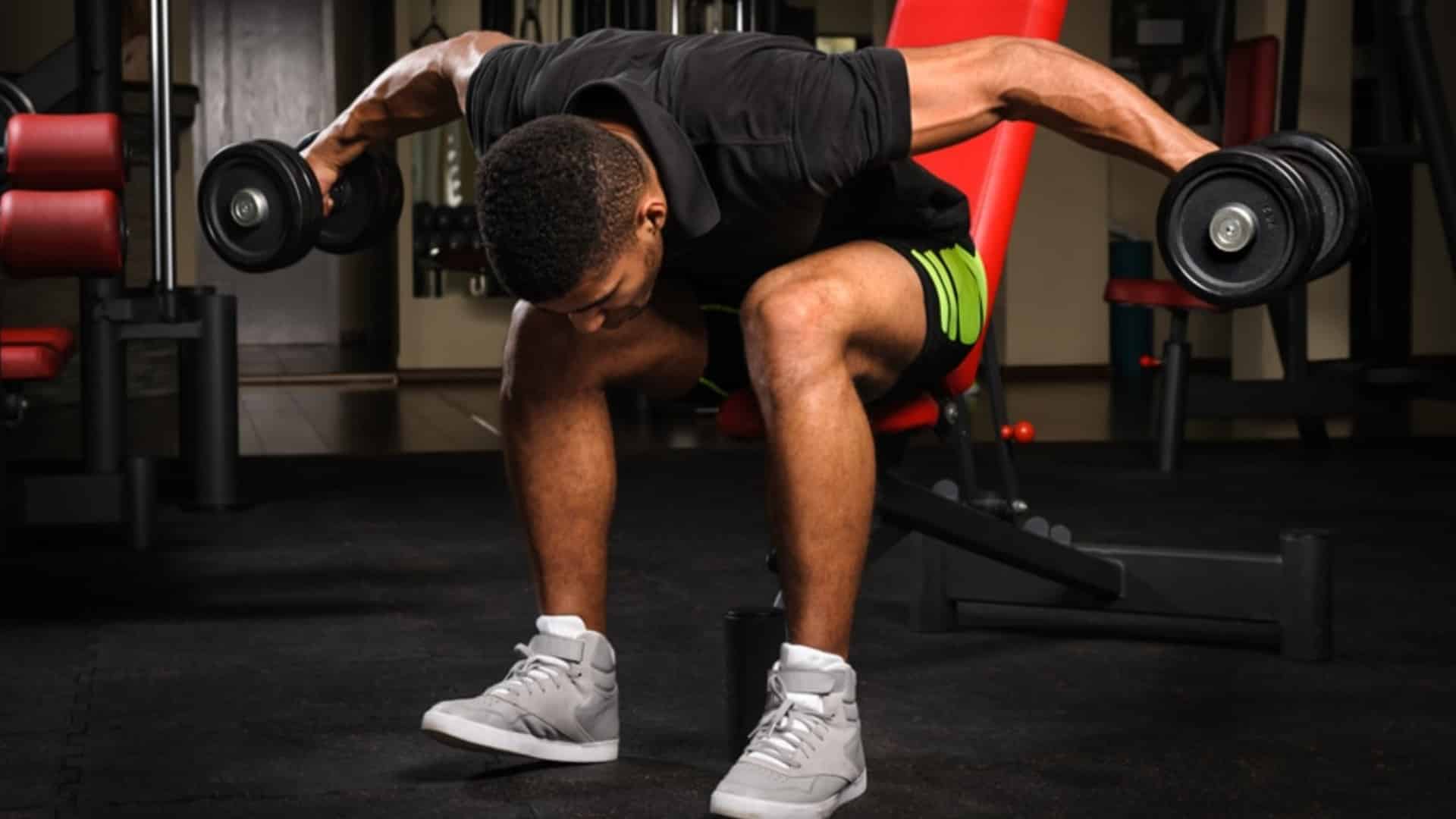
- Bent Over Lateral Raise Muscles Worked
- How To Do Bent Over Dumbbell Lateral Raise
- Proper Form and Technique
- Best variations of Bent over lateral raise
- 1. One Arm Dumbbell Bent over lateral raise
- 2. Bent over Cable lateral raise
- 3. Head-supported Bent Over Lateral Raise
- 4. One-Arm Bent-Over Cable Lateral Raise
- 5. Resistance Band Bent-Over Lateral Raise
Bent Over Lateral Raise Muscles Worked
- The bent-over rear lateral raise primarily works the rear delt.
- Several other muscles work or play the role of stabilizer muscles, such as the lateral deltoid, trapezius, rhomboids, infraspinatus, teres minor, and teres major are also trained.
- The standing bent over rear delt raise involves several synergist muscles, including oblique and core muscles.
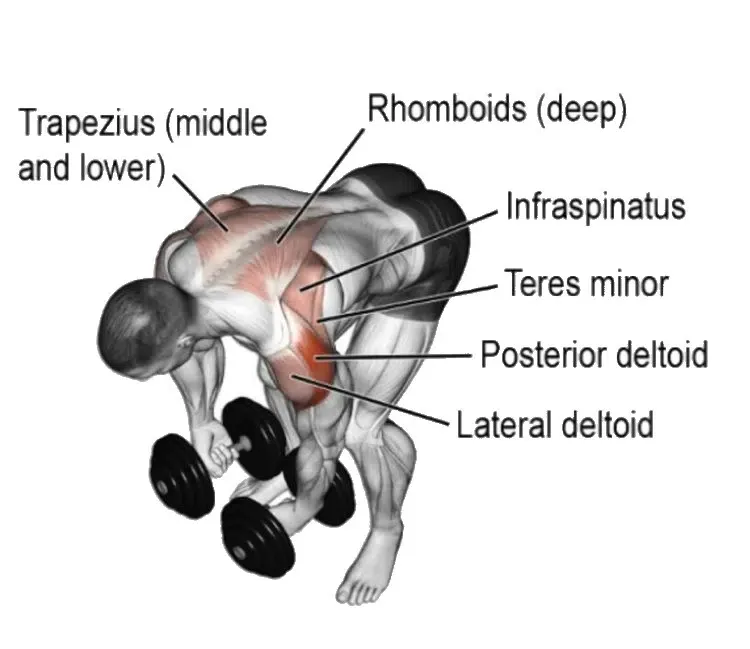
How To Do Bent Over Dumbbell Lateral Raise
- Stand with your feet shoulder-width apart and a slight bend in your knees.
- Hold a dumbbell in each hand with a neutral grip (palms facing each other).
- Hinge at your hips while maintaining a straight back and slightly bend forward.
- Your upper body should be almost parallel to the floor.
- Keep your head neutral, looking down towards the floor to maintain a straight spine.
- Engage your core to stabilize your body throughout the movement.
- With a slight bend in your elbows, raise both arms out to the sides in a controlled motion.
- Keep raising your arms until they align with your shoulders, forming a “T” shape with your body.
- At the top of the movement, squeeze your shoulder blades together to engage the rear deltoids fully.
- Pause briefly at the top of the motion to maximize the contraction in your rear deltoids.
- Slowly lower the dumbbells back to the starting position in a controlled manner.
Proper Form and Technique
It’s important to maintain good form and technique throughout the bent-over lateral raise to make it as effective as possible.
Follow these guidelines to ensure you’re performing the exercise correctly:
- Keep your back straight and avoid rounding or arching it. This will help protect your lower back and effectively engage the targeted muscles.
- You should hinge at the waist and lower your torso until it is parallel to the ground. This position allows for optimal rear deltoid activation and prevents excessive stress on the lower back.
- Activate your core muscles by drawing your belly button towards your spine. This will help to keep your back straight and provide stability.
- Avoid using momentum or swinging your body to lift the dumbbells. Maintain a slow and controlled movement.
- Start with lighter weights and gradually increase the load as you become more comfortable with the exercise. Too heavy weights can worsen your form and increase your risk of injury.
- Do the movement with a full range of motion. Avoid stopping halfway or not fully extending the arms, as this limits the engagement of the rear deltoids. Also, Don’t hyperextend.
- Rest for 24 to 48 hours before training the same muscle groups to allow sufficient recovery.
Best variations of Bent over lateral raise
Incorporating different variations of the bent-over lateral raises exercise can be beneficial.
- Firstly, changing the angle of the movement or the type of equipment used can activate different muscle fibers in the rear deltoids and prevent plateauing. This can increase strength and muscle growth.
- Secondly, varying your exercise routine can help prevent boredom and keep your workouts interesting and challenging.
- The bent-over lateral raises can be modified to prevent injury by targeting different muscle groups rather than just one.
Know More: The Ultimate Guide To Dumbbell Rear Delt Workout
1. One Arm Dumbbell Bent over lateral raise
It helps to identify and address any muscular imbalances you may have on your rear delt. This unilateral approach also engages your core and lower back to a greater degree.
I like to do these after my main shoulder exercises (like overhead presses) as a finishing touch. You could also incorporate them into a back or pull-day routine.
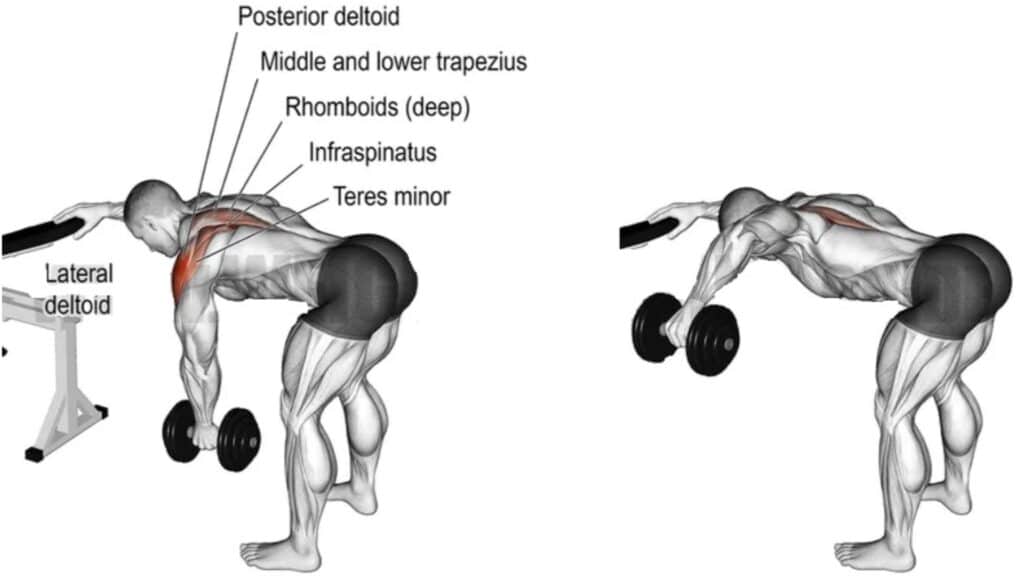
How To Do
- Hold a dumbbell in one hand and bend at the hips and knees until your torso is parallel to the floor.
- For stability, grasp something stable with your free hand.
- The dumbbells should be hanging straight down in front of you, with your palm facing inward (neutral grip)
- Keep your elbow slightly bent and raise the dumbbell to the side until it is leveled with your shoulders.
- Hold for a count of two and slowly lower the dumbbells back to their starting position.
2. Bent over Cable lateral raise
A bent-over cable raise is an excellent exercise to train and isolate the rear deltoid muscle. It provides constant stress on the muscles. Unlike dumbbell raises, where the resistance varies during the lift, the cable pulley affords a uniform resistance throughout the motion.
This constant tension maximizes muscle engagement and helps stimulate greater muscle growth. It also provides smoother and more controlled movements that help isolate and target the rear deltoids effectively.
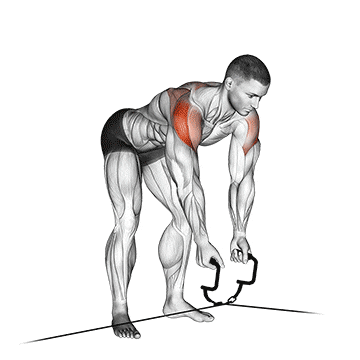
How To Do
- Grab the handles attached to two low pulleys (left-side handle in right hand, right-side handle in left hand).
- Stand in the middle, then bend forward at the waist with the back straight and parallel to the floor.
- Raise your hands upward in an arc to shoulder level so the cables cross over.
- Lower the handles back down to the start position, your right hand directly in front of the left ankle and your left hand in front of the right ankle.
Know More: Rear Delt Cable Exercises For Bigger & Stronger Shoulder
3. Head-supported Bent Over Lateral Raise
Unlike traditional bent over lateral raises, this variation adds an element of support that’ll make you wonder why you haven’t tried it before. Supporting your head eases the load on your back and you can concentrate more on isolating your rear delts.
Keep your torso horizontal during it to target your posterior deltoids. The more upright your torso is, the more emphasis you will place on your lateral deltoids instead of on your posterior deltoids.
I’ve found that having my head supported allows me to really focus on the contraction in my rear delts. It’s almost like a meditation for your muscles.

How To Do
- Find a bench or platform about waist-high or raise a bench to hip height.
- Hold a dumbbell in each hand. Bend over and rest your forehead on the edge (yeah, it might feel weird at first, but stick with me).
- Your back should be straight, your arms should hang before you, and your palms should face inward (neutral grip).
- With a slight bend in your elbows, raise the dumbbells to the sides until your arms parallel the floor.
- Hold for a count of two, then slowly lower the dumbbells to the starting position.
4. One-Arm Bent-Over Cable Lateral Raise
This exercise is a personal favorite of mine, and I’m pumped to share why it might just become yours too.
Unlike its dumbbell cousin, the cable version provides constant tension throughout the entire range of motion. Working out one arm at a time also helps you get rid of any muscle imbalances you might have been experiencing.
Experiment with your torso angle. I’ve found that a slight forward lean (about 15 degrees) hits my rear delts better.
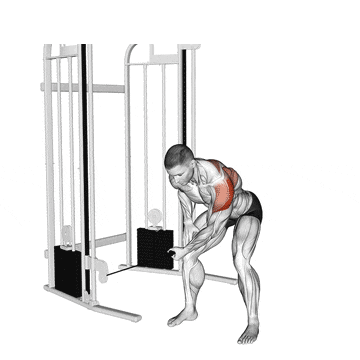
How To Do
- Set the cable machine to its lowest setting. Grab the handle with one hand and step away from the machine.
- Lean forward at the hips, place your right hand on your thigh, and hold a cable pulley in your left hand with your arm extended straight down.
- Raise the weight straight out to the side until your arm is parallel with the floor.
- Pause at the top for 1–2 seconds and slowly return to the starting position.
- Repeat with the right arm.
5. Resistance Band Bent-Over Lateral Raise
If you’re looking for a more portable option or want to add some variety to your workouts, try using resistance bands. This means you can exercise your shoulders anytime, whether you’re at home, traveling, or outside.
One of the coolest things about resistance bands is that the tension increases as you stretch them. This means that your muscles work harder at the top of the movement and get more activation and growth.
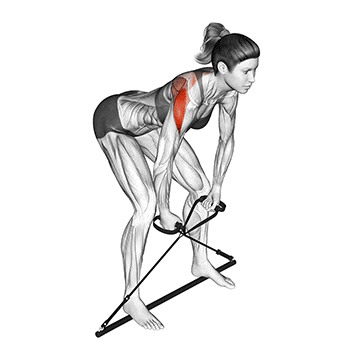
Know More: Barbell Shoulder Exercises To Build Mass And Strength
References
- Coratella G, Tornatore G, Longo S, Esposito F, Cè E. An Electromyographic Analysis of Lateral Raise Variations and Frontal Raise in Competitive Bodybuilders. Int J Environ Res Public Health. 2020 Aug 19;17(17):6015.
- Campos YAC, Vianna JM, Guimarães MP, Oliveira JLD, Hernández-Mosqueira C, da Silva SF, Marchetti PH. Different Shoulder Exercises Affect the Activation of Deltoid Portions in Resistance-Trained Individuals. J Hum Kinet. 2020 Oct 31;75:5-14.
- Franke Rde A, Botton CE, Rodrigues R, Pinto RS, Lima CS. Analysis of anterior, middle and posterior deltoid activation during single and multijoint exercises. J Sports Med Phys Fitness. 2015 Jul-Aug;55(7-8):714-21. Epub 2014 Jun 20. PMID: 24947920.

Manish is a NASM-certified fitness and nutrition coach with over 10 years of experience in weight lifting and fat loss fitness coaching. He specializes in gym-based training and has a lot of knowledge about exercise, lifting technique, biomechanics, and more.
Through “Fit Life Regime,” he generously shares the insights he’s gained over a decade in the field. His goal is to equip others with the knowledge to start their own fitness journey.
